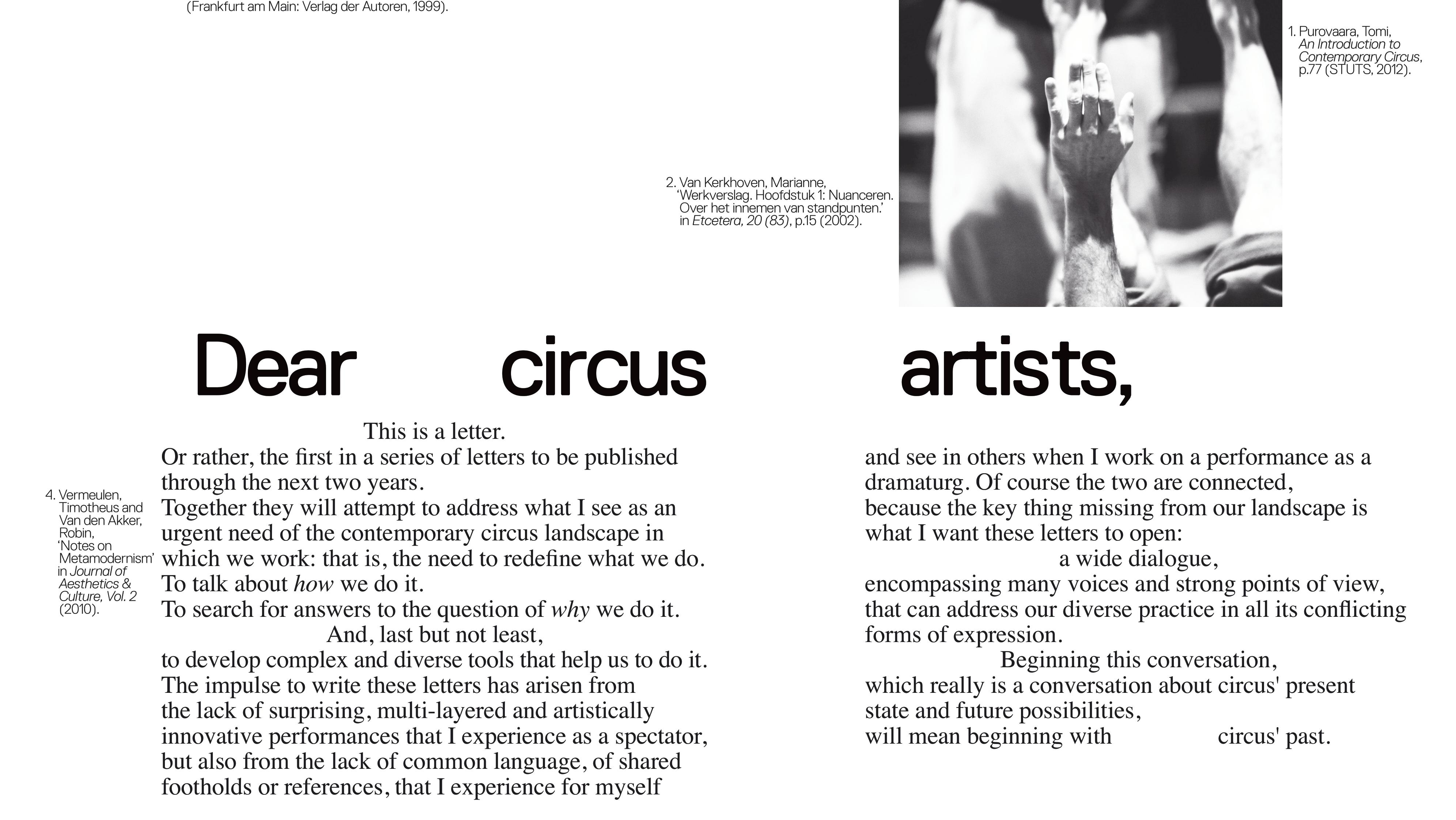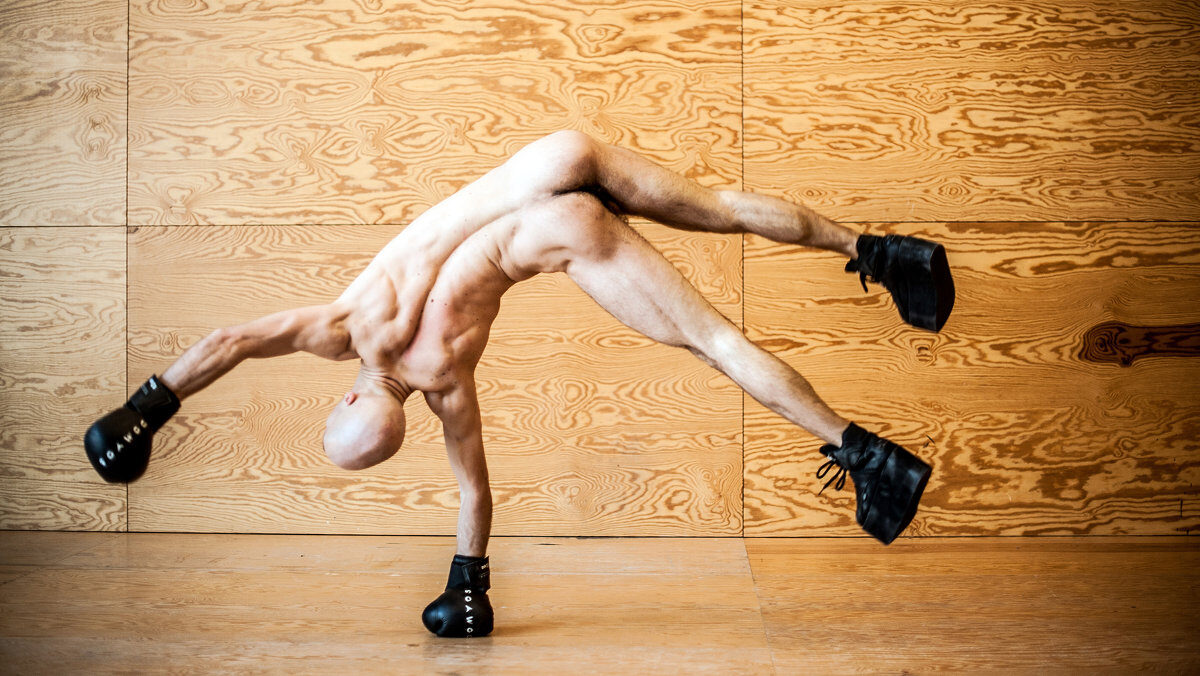Between being and imagining: towards a methodology for artistic research in contemporary circus was the first artistic research project (2013-2017) by Bauke Lievens at KASK & Conservatorium (Ghent, BE). In this project, Bauke researched parts of contemporary European circus creation from the perspective of a dramaturg, circus-maker and spectator. She introduced circus into conversations and places where it is usually not mentioned or found. Conversely, she experimented with concepts taken from related performing arts in her circus-dramaturgical practice. She expressed criticism of the circus (or at least certain aspects of it), received criticism for her critique, and entered into dialogue with people from the circus world.
During this project, Bauke published the First (2015) and Second (2016) Open Letter to the Circus and organized the First (2015, KASK School of Arts, BE) and Second (2016, Cirque-Théâtre d’Elbeuf, FR) Encounter on Artistic Research in Contemporary Circus. Between Being and Imagining was marked by Bauke’s passage from being a dramaturg to making her own artistic work, with the creation of ANECKXANDER (2015) and Raphaël (2017), both co-creations with Alexander Vantournhout. The artistic research project ended in 2017 with the publication of a book-box titled Negotiating Distance: 2 letters and 3 conversations on artistic research in contemporary circus.
The goal of the research project was not so much to create one binding truth about what artistic research in contemporary circus could be. Rather, it was to work with different discursive and artistic forms of dialogue. These dialogues left a number of traces: a booklet entitled Is there a way out of here?, two Open Letters to the Circus, two performances that tried blurring the boundaries of circus as a genre and tradition, a few articles in magazines, and several dramaturgical collaborations with circus companies. In no way did all these conversations, images and performances form a finished entity. They were starting points and openings for further dialogue. Material for further conversation.
What the many research strategies or ‘views’ did have in common was a constant negotiation of distance or closeness to the circus. At the heart of these dialogues was the notion that the act of looking at something, and the nature of the something being looked at, interact to change both the viewer and the thing itself. Because that’s how things go in a good conversation: together we think differently than we would if alone.














